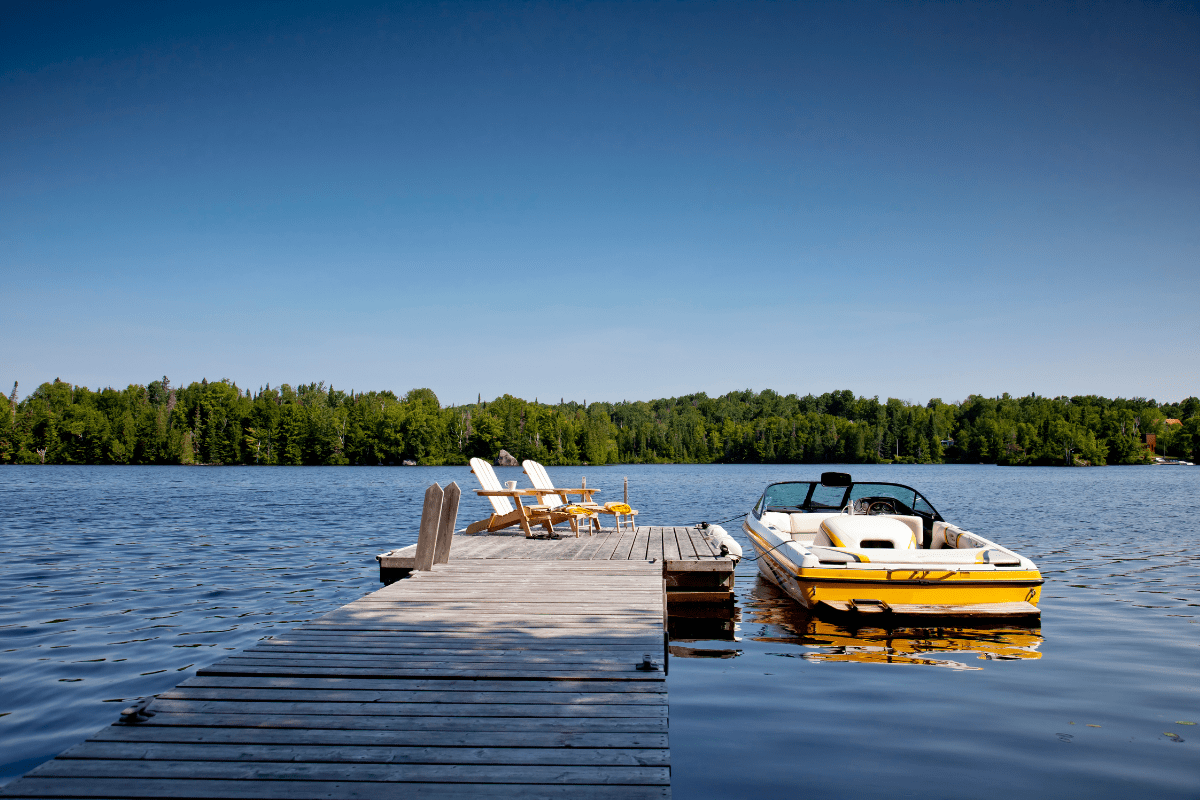Look, I've spent way too many predawn hours fumbling with tackle boxes in the dark and way too much money on gear I'll probably never use, but that's what makes me qualified to tell you where to actually catch fish in Washington. From the salmon-packed waters of Puget Sound to those Instagram-worthy alpine lakes where the trout practically jump into your net (okay, not really, but we can dream), this state offers some seriously diverse fishing. Whether you're chasing monster Chinook in the Columbia or trying to convince your spouse that yes, you really do need another fishing rod for that Eastern Washington bass trip, I've got you covered with the spots that actually produce.
Understanding Washington's fishing regulations… because jail isn't fun
Before you grab your lucky fishing hat and head out, let's talk about the boring but essential stuff. Washington requires anyone 15 and older to have a valid fishing license, and trust me, the game wardens aren't messing around. Current fees run $55.35 for residents who want the full combo package (freshwater, saltwater, and shellfish), while non-residents shell out $124.65. Kids under 15 fish free, which is great until they outfish you and you have to pretend you're happy about it.
Here's the kicker… fees are jumping 38% on July 1, 2025, according to WDFW's fee schedule. So if you're thinking about getting a multi-year license, now's the time. The Fish Washington package at $69.55 is actually a solid deal if you're serious about fishing, since it includes two-pole and Puget Sound crab endorsements.
The catch limits are pretty straightforward:
- Salmon: 2 daily most areas
- Trout: 2 in rivers, 5 in lakes
- Chinook minimum: 22 inches
- Steelhead minimum: 20 inches
- Selective gear rules in many waters
Pro tip: Download the Fish Washington mobile app. Regulations change faster than my teenager's mood, and the app keeps you current. Plus, Washington co-manages with treaty tribes, meaning some areas have special rules or closures. Check the current regulations before each trip unless you enjoy awkward conversations with enforcement officers.
Puget Sound: Where salmon dreams come true (sometimes)
The public pier advantage
Let me tell you about Edmonds Pier, the crown jewel of public fishing spots at 47.8106° N, 122.3837° W. This place has everything… ADA access, actual restrooms (a luxury in the fishing world), fish cleaning stations, and free parking. According to Seattle Fishing Company, all five Pacific salmon species cruise through here. Peak Chinook action runs June through August, while those tasty resident blackmouth salmon keep us entertained October through April.
The secret? Fish two hours before to two hours after tide changes. I've watched countless anglers show up at random times and wonder why they're not catching anything. Timing is everything, folks. Point Defiance in Tacoma serves as another hotspot where salmon funnel through the Tacoma Narrows. The underwater structure also holds lingcod year-round, though the currents here can be gnarly… fish the slack tides unless you enjoy losing expensive gear to Neptune.
Des Moines Marina Pier and Les Davis Pier round out the South Sound options, both offering that crucial ADA access and consistent salmon fishing from July through September. These aren't secret spots by any means, but they produce fish, and sometimes that's all that matters.
Boat fishing bonanza
If you've got access to a boat (or a friend with a boat… even better), Possession Point at the southern tip of Whidbey Island is where dreams come true. Located at 47.905° N, 122.380° W, this spot features an underwater reef system that acts like a salmon magnet. FishingBooker's guide confirms it's one of Puget Sound's premier destinations.
Fair warning though… this spot gets rougher than a cat's tongue in a sandpaper factory. If you're prone to seasickness or your boat-handling skills are questionable, maybe stick to the calmer waters near shore.
Ocean fishing adventures
Westport boasts the state's largest charter fleet, with salmon seasons running late June through September. Charter costs range from $150-300 per person for 6-8 hour trips, which sounds expensive until you calculate the cost of owning a boat (trust me, don't). Todd's Extreme Fishing specializes in deep-water halibut and lingcod, using electric reels because apparently hand-cranking a 100-pound halibut from 300 feet down isn't everyone's idea of fun.
The Westport Jetty offers excellent shore fishing for those of us too cheap or seasick for charters. Rockfish and lingcod are the main targets, with the occasional salmon making an appearance just to keep things interesting.
Columbia River: Where giants swim
The legendary fisheries
The Columbia River is basically the Interstate 5 for salmon, and Bonneville Dam acts as the traffic jam where we can actually catch them. Located 40 miles east of Portland, this spot concentrates fish like nowhere else. Spring Chinook peak April through May, averaging 15-25 pounds of pure silver muscle. Fall Chinook from August through October can exceed 40 pounds… yes, forty pounds of fish that will make your arms feel like overcooked spaghetti.
The area offers excellent bank access on both sides, with free parking and fish cleaning facilities. According to Best Fishing in America, successful techniques include trolling 360 flashers or bank plunking with pyramid sinkers heavy enough to anchor a small yacht (4-8 ounces).
Drano Lake: The toilet bowl of dreams
I know, I know… "Toilet Bowl" isn't the most appetizing nickname for a fishing spot, but Drano Lake has achieved legendary status among salmon anglers. Where the Little White Salmon River meets the Columbia, spring Chinook stack up from March through June like shoppers on Black Friday. These upriver fish are prized for their eating quality… firm, rich flesh that makes your grocery store salmon look like cardboard.
Just remember it closes Wednesdays for tribal fishing during peak season. Nothing ruins a fishing trip faster than showing up on the wrong day. Pro-Troll flashers with prawn spinners or Brad's Super Baits work well here, fished with enough weight (6-12 ounces) to reach the strike zone.
The Hanford Reach above Richland represents the Columbia's last free-flowing section and hosts massive fall Chinook. We're talking fish that regularly exceed 30 pounds, with some giants pushing 50. The 2025 forecast calls for 122,500 upriver spring Chinook, though sturgeon seasons have become scarcer than honest politicians.
Eastern Washington: Bass and walleye paradise
The warmwater wonderlands
Eastern Washington might look like a desert, but hidden among the sagebrush are some fantastic fishing lakes. Moses Lake, easily accessed from I-90, covers 6,910 acres of walleye and bass heaven. Prime walleye fishing runs May through June, with fish averaging 17 inches. The technique here isn't rocket science… troll bottom walkers with worm harnesses along structure, or cast plastics around the countless points and coves for bass.
Banks Lake stretches 27 miles through Grant County, offering a dramatic backdrop with Steamboat Rock. The clear water here means fish can see your clumsy presentation from a mile away, so finesse is key. Hot spots include:
- Barker Flats
- The Punch Bowl
- Million Dollar Mile
- Steamboat Rock State Park area
Recent surveys show walleye averaging 17 inches, with occasional tanks exceeding 10 pounds. That's a lot of fish fry, my friends.
Potholes Reservoir: Bass central
Potholes Reservoir (also called O'Sullivan Reservoir because apparently one name isn't enough) ranks as the 9th best bass lake in the West. This 14,281-acre impoundment supports both largemouth and smallmouth bass, plus walleye and yellow perch that grow bigger than they have any right to. According to Northwest Fishing Reports, the perch here commonly reach 10-15 inches… that's not bait, that's dinner.
MarDon Resort provides everything you need… cabins, tackle shop, restaurant, and a bar where you can exaggerate about the one that got away. Potholes State Park offers camping and boat launching for the more budget-conscious among us.
Lake Roosevelt, the massive puddle behind Grand Coulee Dam, stretches over 150 miles and receives 750,000 rainbow trout annually. Fish commonly reach 22-25 inches, which sounds great until summer arrives and you're trolling 100+ feet deep trying to find them. Call 800-824-4916 for water levels before launching… nothing says "ruined weekend" like arriving to find the boat ramp high and dry.
Olympic Peninsula rivers: Steelhead mecca
The rivers of dreams
The Olympic Peninsula's rivers have achieved legendary status among steelhead anglers, and for good reason. The Hoh River, flowing through Olympic National Park, might be the most famous steelhead water in North America. Winter steelhead peak January through March, with wild fish occasionally exceeding 20 pounds of chrome-bright fury.
Within park boundaries, it's fly fishing only from a quarter-mile below Hoh Campground to the park boundary. The 2024-25 season allows retention of two adipose-clipped hatchery steelhead from June 1 through March 31, with all wild fish released. And yes, you better know the difference between a clipped and unclipped fin, or you'll be having an expensive conversation with a ranger.
Sol Duc and Bogachiel rivers
The Sol Duc offers excellent opportunities for both hatchery and wild steelhead. Hatchery fish peak in December and January, while wild fish arrive fashionably late in February through April. Access begins at the concrete pump station at Sol Duc Hatchery, with boat fishing allowed downstream to the mouth during open season.
Nick Hendrickson of Olympic Peninsula Guide Service puts it perfectly: "Steelhead fishing in the Olympic Peninsula typically occurs from late fall through late spring… December through May is the prime season." His guided trips run $175-400 per person for full-day trips, depending on group size.
The Bogachiel River, known locally as "The Bogey" (because we can't just call things by their actual names), receives approximately 100,000 hatchery smolt plants annually. This creates excellent opportunities to harvest hatchery fish while releasing wild steelhead. Peak hatchery fishing runs November through January.
Cascade mountain treasures
The big lakes
Lake Chelan stretches over 50 miles through the North Cascades and holds the state lake trout record at 35.63 pounds. That's not a typo… thirty-five pounds of lake trout. Kokanee fishing peaks mid-April through June, while trophy lake trout fishing is best during winter months when sane people are sitting by their fireplaces. WDFW's guide provides full details on this massive waterbody.
Ross Lake opens July 1 through October 31 and produces large native rainbow trout in a setting so beautiful it'll make you forget you hiked three hours to get there. Access requires either entering from British Columbia (bring your passport) or hiking/boating from the south. The selective gear rules and catch restrictions help maintain the quality fishery.
Alpine lakes wilderness
The Alpine Lakes Wilderness encompasses over 400,000 acres containing numerous high mountain lakes. Many hold brook trout exceeding 5 pounds, which might not sound huge until you're catching them on ultralight gear in a pristine mountain setting. Best Fishing in America highlights lakes like Snow Lake, Gem Lake, and the Necklace Valley chain.
Fair warning: these lakes require substantial hikes. We're talking the kind of hikes where you question your life choices about halfway up. But the payoff? Pristine alpine lakes with eager trout and views that'll make your Instagram followers hate you. The season runs from the last Saturday in April through October 31, though ice-off timing varies wildly with elevation.
Essential safety tips that might save your bacon
Washington law requires life jackets for everyone aboard, with kids 12 and under required to wear them on boats under 19 feet. The state parks website has all the details, but the short version is: don't be stupid, wear your life jacket.
For catch-and-release fishing, Olympic National Park emphasizes that "native fish contribute to nutrient recycling and help maintain natural ecosystem processes." Translation: handle fish gently, use barbless hooks, and get them back in the water quickly. Your Instagram photo isn't worth killing a fish.
Weather in Washington can change faster than a teenager's mood. Pack layers, rain gear, and sun protection… sometimes all in the same day. In Eastern Washington, summer temperatures regularly exceed 100°F, while the Olympic Peninsula might be dumping rain. As WDFW biologist Curt Holt notes in The Daily World, "Salmon and steelhead, these icons of the Northwest, like the Orca, are visible signs to everyone that something is happening to our region."
Let's keep it that way by fishing responsibly.
Making it happen
Washington offers world-class fishing year-round if you know where to look. Summer brings peak salmon fishing in saltwater and perfect conditions for alpine lakes. Winter offers solitude on steelhead rivers and excellent lake trout fishing. Spring and fall provide the best walleye and bass action in Eastern Washington.
Whether you're jigging for salmon off Edmonds Pier, chasing walleye on Banks Lake, or hiking to a remote alpine lake, success comes down to timing, preparation, and a bit of luck. Get your license, check the regulations, and remember… the worst day fishing still beats the best day at work. Unless you're a fishing guide, in which case, lucky you.
Now stop reading and go fishing. The fish aren't going to catch themselves, and your honey-do list isn't going anywhere.





